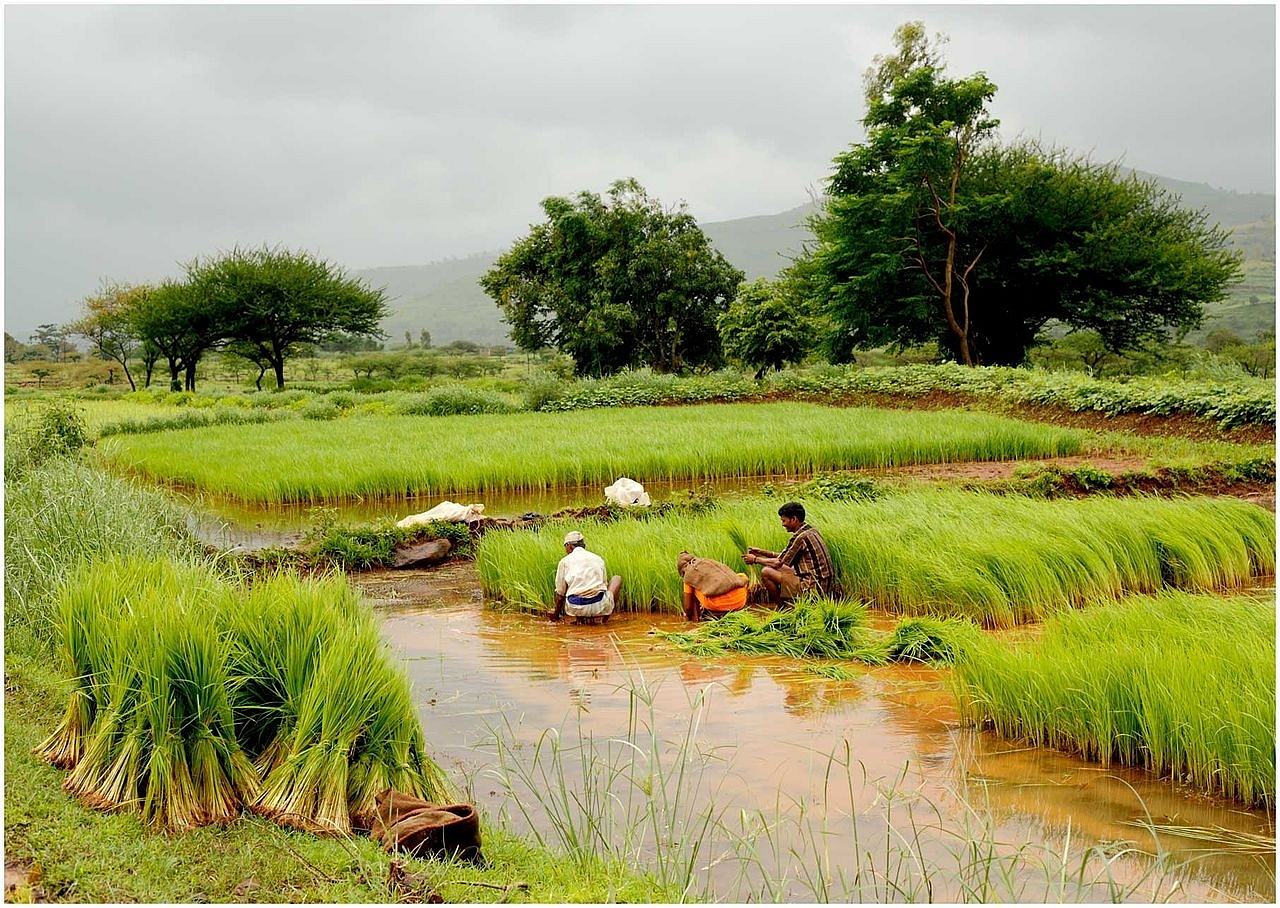Economy
Why Are Farmers Protesting Despite Bumper Harvests?
- Behind the rising tide of farmers’ protests lie several structural weaknesses facing the farm economy.

Farmers in a paddy field (Ramnath Bhat/Flickr/WikiCommons)
In a year when farm growth has crossed the 4 per cent mark, and official statistics show a record increase in production, one would have expected farmers to celebrate. Instead, farmers in states such as Madhya Pradesh and Maharashtra are out on the streets protesting, and in some cases, facing bullets from the local police.
What explains this paradox?
The answer might lie in several structural changes that India’s farm economy and polity have witnessed over the past few years.
Three key factors stand out: rising price risks faced by farmers, especially horticultural producers, lack of adequate policy support, and a sense of betrayal among the land-owning community which had pinned its hopes on Prime Minister Narendra Modi and his party Bharatiya Janata Party (BJP) to usher a new era of prosperity or “achhe din”.
In response to rising demand, the Indian farmer has now begun producing fruits and vegetables in much greater quantities than before, with horticultural output exceeding that of food grains for the fifth straight year.
This change, however, has not been accompanied either by investments in warehousing facilities for perishables or by price support measures for fruits and vegetables, which could have minimised price risks that horticultural producers face today. Unlike wheat or rice, prices of items such as tomatoes or onions can crash sharply when there is a bumper crop. As the chart below shows, rising horticultural output has been accompanied by rising volatility.
For the average Indian farmer who has no insurance against such fluctuations, demonetisation might have acted as the proverbial last straw which broke her back.
Even in the case of food grains, where minimum support prices (MSPs) offer a floor price, the government has kept prices on a tight leash. In nominal terms, the MSP for rice rose at an annual rate of 4 per cent between 2014-15 and 2016-17 after rising at an annual pace of 6.3 per cent over the previous five years. The MSP for wheat rose at an annual pace of 5.1 per cent between 2014-15 and 2017-18 after rising at an annual pace of 5.3 per cent over the previous five years.
In real terms (i.e., after adjusting for inflation), the decline in MSP over the past few years is only a continuation of a trend that began during the second term of the United Progressive Alliance (UPA) government.
To compound farm woes, export earnings have also collapsed, thanks to a turn in the global commodity cycle.
The lack of supportive prices and the consequent slowdown in farm earnings seems to have upset the land-owning class the most. It is this class (often belonging to dominant social groups such as the Jats in Haryana, Patidars in Gujarat, and Marathas in Maharashtra) which is at the forefront of the agitations that have rocked the country so far. And it is this class which had backed Modi the most, perhaps taken in by his electoral promise of reworking the MSP formula to deliver 50 per cent profits to farmers.
Post-poll survey data collected by research group Lokniti at the Delhi-based Centre for the Study of Developing Societies shows that an unprecedented 50 per cent of land-owning farmers had voted for the BJP-led National Democratic Alliance (NDA) in the 2014 elections, compared to just over 33 per cent of tenant-cultivators. The Lokniti survey classifies all farmers owning more than one acre of land as landowners.
With bleak job prospects outside agriculture and low returns from farming, the land-owning class appears to be getting restive.
It is the fear of losing the support of this class that made the Modi administration drop its plans for diluting the land acquisition Act enacted by the previous government. The landless after all were unaffected by the proposed changes to that Act. At that time, Modi and his party bought peace by dropping the amendments to the land acquisition Act.
The current spate of protests poses a far more difficult challenge. Finding a politically viable solution without taking a fiscal hit will be a tough ask for the Modi government.
This article was originally published in Mint and has been republished here with permission.
Support Swarajya's 50 Ground Reports Project & Sponsor A Story
Every general election Swarajya does a 50 ground reports project.
Aimed only at serious readers and those who appreciate the nuances of political undercurrents, the project provides a sense of India's electoral landscape. As you know, these reports are produced after considerable investment of travel, time and effort on the ground.
This time too we've kicked off the project in style and have covered over 30 constituencies already. If you're someone who appreciates such work and have enjoyed our coverage please consider sponsoring a ground report for just Rs 2999 to Rs 19,999 - it goes a long way in helping us produce more quality reportage.
You can also back this project by becoming a subscriber for as little as Rs 999 - so do click on this links and choose a plan that suits you and back us.
Click below to contribute.
Latest